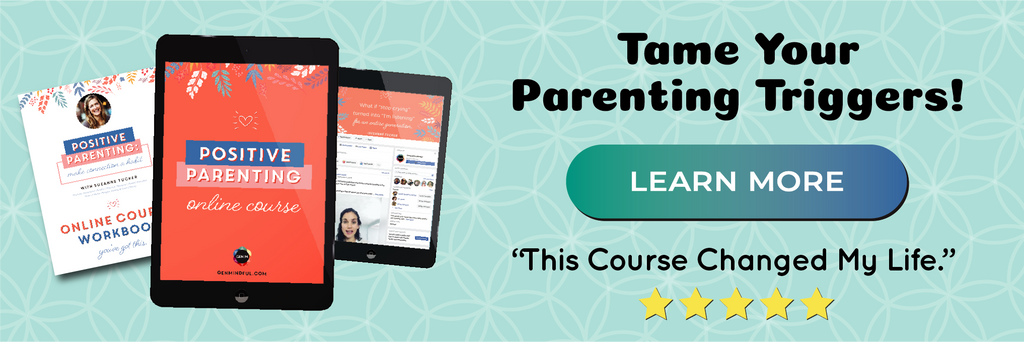
Have you ever paused to notice your emotions? As human beings, we experience a full spectrum throughout our lifetimes. Some emotions feel pleasant in the body, and some feel less pleasant. And while we often feel most comfortable with pleasant emotional states such as happiness, silliness, kindness, and gratitude, unpleasant emotions such as fear, sadness, anger, and determination are some of our most influential teachers.
The Colors Of Our Emotions
Generation Mindful’s Time-In ToolKit is based on the brain research from the Yale Center for Emotional Intelligence, which developed an evidence-informed tool for building EQ through self-awareness and self-regulation. This tool, known as the Mood Meter, is effective for both children and adults alike.
The Mood Meter is a grid with two axes - one axis describes the amount of physical energy in the body (high, low) while the other describes the level of pleasantness in the body (pleasant, unpleasant). The two axes make up four quadrants that describe each mood group, labeled Yellow, Green, Blue, and Red.
- Yellow Zone (high energy, high pleasantness): These are feelings such as happy, excited, proud, and brave. These emotions can be helpful for creative thinking, brainstorming, and energetic group activities.
- Green Zone (low energy, high pleasantness): Feelings such as calm, gratitude, and love are helpful in self-reflection and collaboration activities.
- Blue Zone (low energy, low pleasantness): These emotions - such as sad, worried, or feeling disappointed can help with focus, deductive reasoning, and critical thinking, and primes the brain for empathy.
- Red Zone (high energy, low pleasantness): Emotions such as fear, anger, anxiousness, and determination can heighten awareness and are useful for competitive activities like debating or passionate expression like promoting a cause.
At any given moment we can capitalize on all quadrants, knowing that all emotions are valuable.
Determination As A Red Emotion
The ToolKit’s Feelings Posters resemble the Mood Meter’s grid. Parents have wondered, why is determination labeled a Red (high energy, low pleasantness) emotion? Unpleasant … wait … feeling determined isn’t a bad thing!
And we totally agree.
When we think of the word unpleasant, we often think of bad as in that emotion is bad. However, studies show that feelings are not good nor bad and, in fact, all emotions are informative, even the ones that feel challenging. So while something may feel pleasant or unpleasant, high energy or low energy, all emotions are all created equal. When we explore these types of emotions, we begin to understand the basis behind them to learn and grow.
Let’s take a look at a few examples of how determination may feel uncomfortable and be useful.
- Running a marathon is hard work. Your muscles ache, your breath may be short and your body is yelling, “enough already!” But that fire inside of you called determination keeps you going towards the finish line.
- Racism exists … world pollution … child abuse … these are worldly injustices and the road for change can feel long and exhausting. Yet, it is determination that brings forth the focus and perseverance for a new way.
- Childbirth is beautiful. And, any mama can also tell you, it’s not easy- growing a baby, laboring and delivering … all hard work. It’s the love for your child and your determination for a healthy birth that keeps you breathing and pushing (figuratively or literally) until your baby is finally in your arms.
Determination isn’t necessarily a pleasant sensation in the body, but it is an important edge that brings about resilience and grit. It’s similar to weight training. When you lift, the weight is heavier than your muscle fibers. It’s that resistance that makes the muscle lay down more connective tissue so it can grow. In that way, determination is like our emotional weight training, and other unpleasant emotions are, too. Here are a few examples:
- Sadness may tell us that we are experiencing a loss.
- Anger may prompt us to problem-solve.
- Fear may indicate that we are in danger.
The Mood Meter In Practice
As we understand the various emotional states on the Mood Meter and see all emotions as healthy, normal, and useful, we can start to use them as informational guides to self-awareness, social awareness, and, when needed, action.
The Yale Center for Emotional Intelligence created the RULER method to help us apply the five key elements to emotional skills.
R: Recognize emotions. Namely, understanding where you are on the Mood Meter.
U: Understand emotions. Why do you feel this way?
L: Label emotions. What word best describes what you are feeling? There are hundreds of words to describe the feelings in each mood quadrant.
E: Express emotions. How are you expressing this feeling? What are you doing with your facial expression, body language, and voice? Is the way you are expressing your feeling helpful for the situation you are in and the people around you?
R: Regulate emotions. What strategy will you use to feel more, less, or the same of what you are feeling? Is your current feeling helpful? If so, what will you do to continue feeling that way or to intensify that feeling? If not, what could you do to feel less of the feeling?
All emotions matter. It is our birthright to feel all of them, and, when we start recognizing all emotions as sacred forms of expression, we can listen to the messages being shared through them. While some emotions aren’t necessarily pleasant to feel, they do drive learning and help us evolve more into ourselves. And that’s the best thing we can be.
• • •
Generation Mindful creates educational tools, toys, and programs that nurture emotional intelligence through play and positive discipline. Get a FREE Time-In Starter Kit when you sign up to become a GENM member today!
Join us and receive positive parenting tools and support in your inbox each week.





Leave a comment